Felony Murder Explained
What is Felony Murder?
“A legal doctrine that allows anyone involved in a crime to be charged with murder if a death occurs during the course of the crime, even if they did not kill anyone.”
Felony Murder is a legal doctrine that puts numerous people behind bars for murders they did not commit. The Felony Murder Law Reform (#FMLR) seeks to change the outdated and deeply unfair felony murder rule, which had allowed people who did not kill to nonetheless be charged, convicted, and sentenced as murderers. The current felony murder laws allow prosecutors to charge all accomplices to a crime with first degree murder. It does not matter if there was no intention to kill, if the death was accidental, or if the accomplice had no knowledge that someone else would kill. Everyone is just as responsible, as if they had planned and committed the murder themselves. In practice, this means that even if one was unaware that a killing would or did take place, they could still face a murder charge and receive a sentence equally or in some cases more severe than the actual perpetrator. This doctrine has been abolished for decades in all other common law countries, but many states still have these laws in place, including Minnesota.
What is Felony Murder?
“A legal doctrine that allows anyone involved in a crime to be charged with murder if a death occurs during the course of the crime, even if they did not intend to kill anyone.”
Felony Murder is a legal doctrine that puts numerous people behind bars for murders they did not commit. The Felony Murder Law Reform (#FMLR) seeks to change the outdated and deeply unfair felony murder rule, which had allowed people who did not kill to nonetheless be charged, convicted, and sentenced as murderers. The current felony murder laws allow prosecutors to charge all accomplices to a crime with first degree murder. It does not matter if there was no intention to kill, if the death was accidental, or if the accomplice had no knowledge that someone else would kill. Everyone is just as responsible, as if they had planned and committed the murder themselves. In practice, this means that even if one was unaware that a killing would or did take place, they could still face a murder charge and receive a sentence equally or in some cases more severe than the actual perpetrator. This doctrine has been abolished for decades in all other common law countries, but many states still have these laws in place, including Minnesota.
Origins of the Felony Murder Doctrine
Historians believe that the common law rule dates to the twelfth century and took its modern form in the eighteenth century. The modern conception of the felony murder rule arose in 1716, by William Hawkins’ during his work on English criminal law.
The felony murder rule has been ABOLISHED in every other common law country EXCEPT the United States. This includes Canada, England (1957), Ireland (1964), Scotland, and India. In Canada, it has been held to be unconstitutional, as breaching the principles of fundamental justice (1990). Again, the United States is the only country still using this antiquated doctrine.

A State-by-State Comparison
Even in the United States, there are vast differences in the Felony Murder Laws. Currently in the United States, reforms and abolishment have happened or are happening.
Ohio, Hawaii, Kentucky, Michigan, and Massachusetts no longer apply the felony murder rule. (Abolished)
Arkansas, California, Connecticut, Delaware, Maine, New Jersey, New York, North Dakota, Oregon, and Washington limit the felony murder rule to the actual perpetrators of the homicide.
There are many states currently in the process of changing their felony murder laws, including Florida, Illinois, Maryland, Colorado, and Minnesota. The most recent reform is California’s SB 1437. In September 2019, Governor Brown signed a reform of the law which effectively ended the role of the “natural and probable consequences” doctrine in murder cases. They not only reformed the law, but also made the change retroactive. The concept being, if a law is wrong today, it was also wrong yesterday and those affected should be resentenced for a crime they did commit and/or a murder they did not participate in!
...there are cases in Minnesota of people serving Life without Parole, who were not even present at the time of the murder.
How Do Minnesota Felony Murder Laws Compare?
Minnesota some of the strictest felony murder rules in the country. Minnesota has two principle felony murder rules—one leading to first degree murder, and one leading to second degree murder. “One-punch” felony murder leads to 2nd degree murder. Most states recognize the merger doctrine, which holds that a criminal assault cannot serve as the predicate felony for the felony murder rule, but Minnesota does not. This means that someone who simply punches another person (which could be a misdemeanor charge) could wind up being charged with first-degree murder.
Minnesota’s use of aiding and abetting with regards to a felony event (statute 609.05) is expansive and can be used to charge someone with murder who, in actuality, had very little involvement with the felony! In fact, there are cases in Minnesota of people serving Life without Parole, who were not even present at the time of the murder.
Supporting Data
The following data is sourced from the Minnesota Department of Corrections, describing individuals currently serving time under the Felony Murder Laws of Minnesota.
Financial Impact
There are 473 relatively low risk incarcerated persons that will cost Minnesota Taxpayer’s $500 Million over the course of their confinement, due to the process of over sentencing individuals for a crime they did not commit.
Total Yearly cost to Minnesota taxpayers is $18 million. If all of these individuals were charged with only the crime they did commit and sentenced to those crimes this could be a savings in excess of $500 Million to the Minnesota Department of Corrections and taxpayers.
Note that the Felony Murder Individuals make up over 6% of the total population of the Minnesota DOC.
These numbers are likely LOW as the above data does not give the exact number of months and the exact age at conviction in the MN DOC Data breakdown.
The calculations above are based on the published data that the cost of confinement to an average age person in the State of Minnesota is $37,960 per year or $104 a day.
Racial Makeup
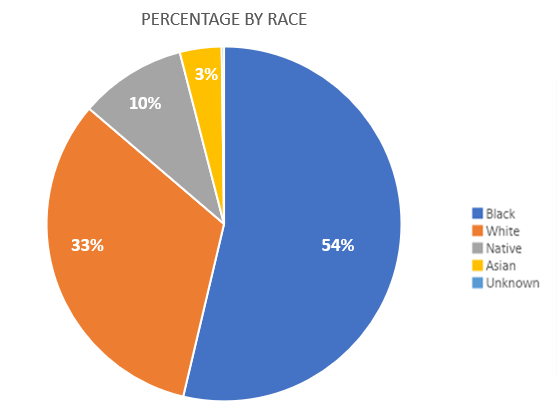
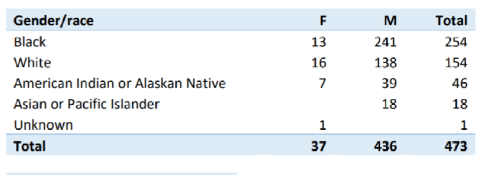
Based on the Population in Minnesota and considering the data in the table above, we can discern the following:
- A Native American is 10X more likely to be charged under the Felony Murder Laws
- A Black American is 5X more likely to be charged under the Felony Murder Laws
Age Breakdown
47% of total persons are UNDER 24 years old.
The young adult brain does not fully develop until on or after the age of 25, specifically the prefrontal cortex. The lack of this development in young brains impacts control and a persons’ ability to:
- Delay and reflect (limits amount of time juveniles will think before they act)
- Take all options into account (Juveniles are very impulsive)
- Contemplate risks and consequences (sensation seeking is at an all-time high in mid-adolescence)
- Have social intelligence (Juveniles have difficulty being empathetic and are more susceptible to peer pressure)
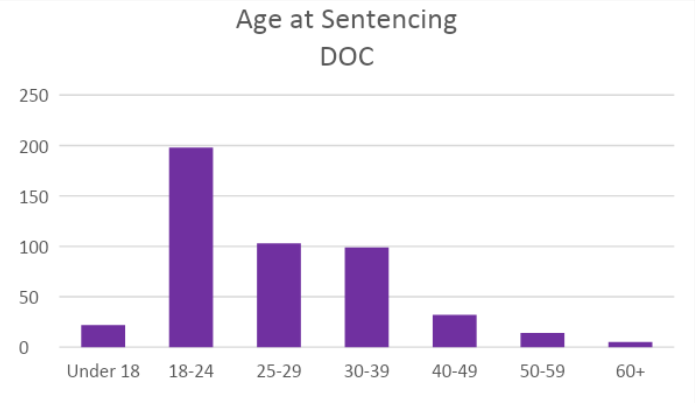
Length of Sentence Breakdown
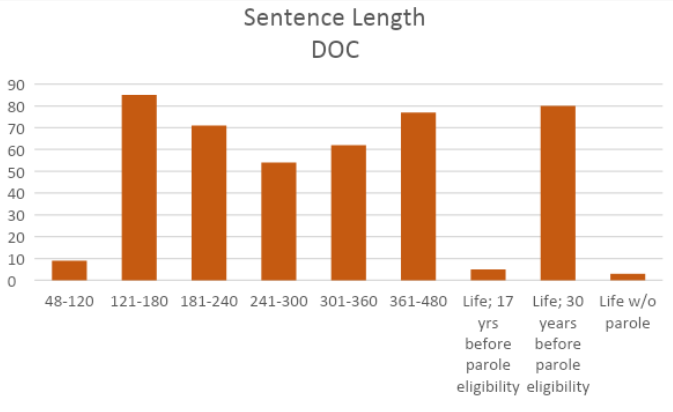
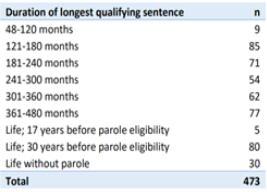
From analyzing this data, we can determine that these laws are not consistent in sentencing. One person may receive as little as 48 months, while another receives Life Without Parole for similar levels of culpability in a crime. There are also cases of persons who received probation with similar cases.
The way the laws are currently written and used allow a prosecutor and District Attorney’s complete discretion in what charges are brought forth and what plea deals are offered. This allows for large discrepancies and disparities in sentencing based on the parties involved. This can be further identified by looking at the sentence data by county in Minnesota.
Criminal History Scores
Criminal History Scores show whether a person has any prior convictions and their severity. This is intended to be used as an indicator for the sentencing guidelines.
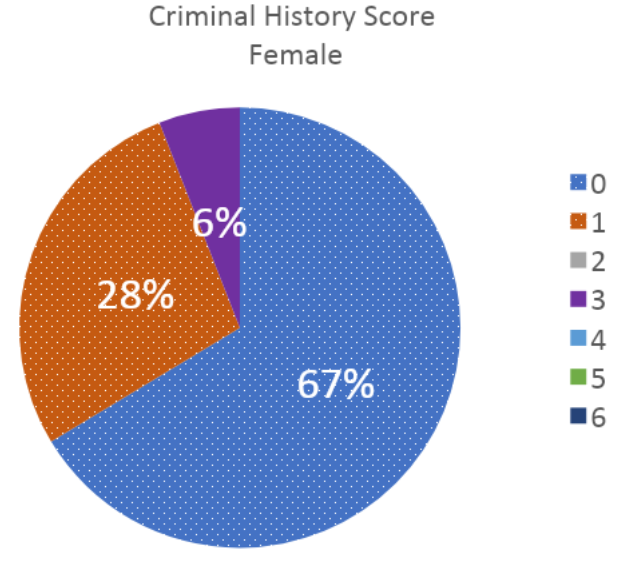
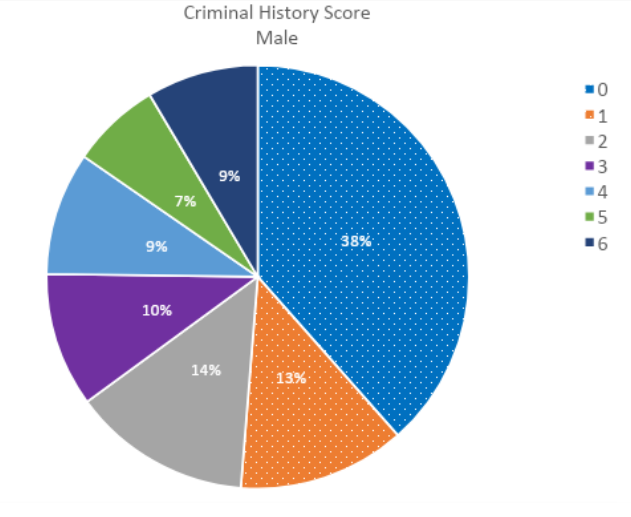
What we can see in the left image above is that an overwhelming majority of women have no or minimal criminal history scores (94%). Also, 51 % of men have similarly low scores. Based on the average sentences, we can discern that these scores are not playing a role in the sentence length when it comes to Felony Murder convictions.
Convictions by County

**For more information on the data provided above, as well as data provided to FMLR by the Minnesota Sentencing Guidelines Committee, please read our whitepaper on Google Docs.
